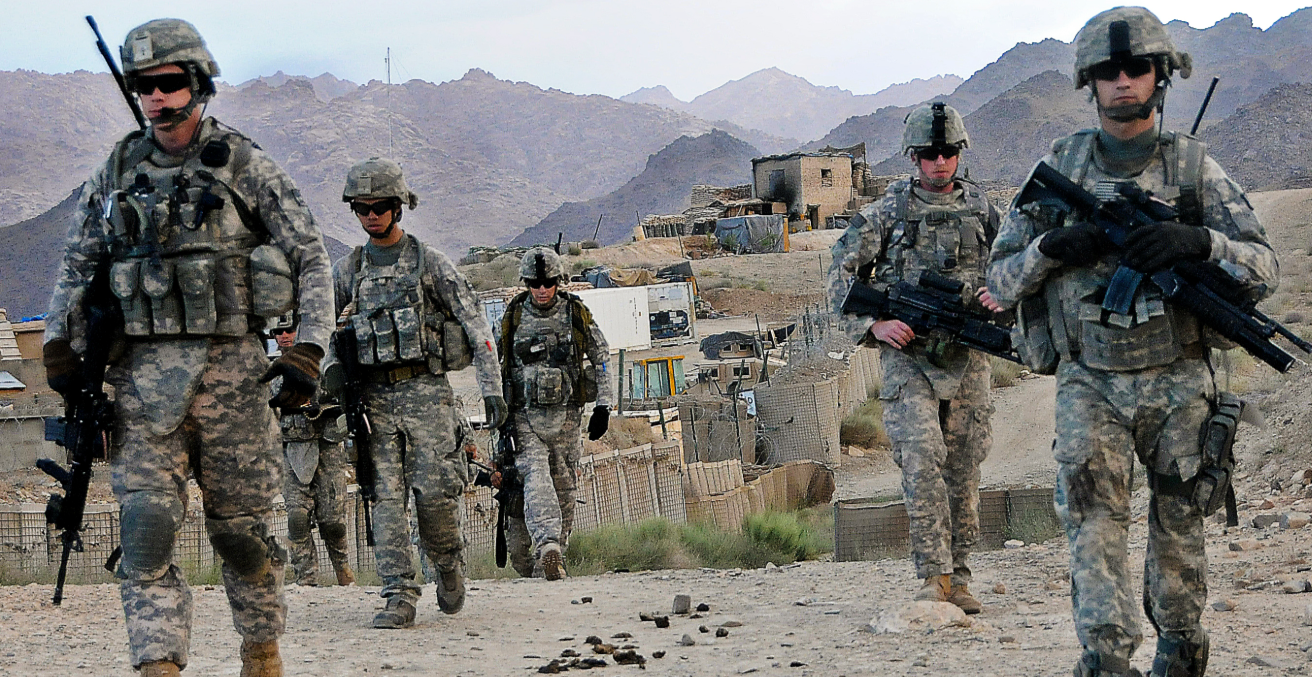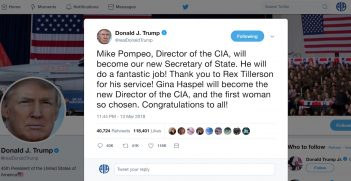Afghanistan: Can Trump Kick-Start a Viable Exit Strategy?

President Trump faces significant challenges to kick-starting the end of America’s conventional military involvement in Afghanistan.
President Trump’s reported decision last month to withdraw approximately 7000 US troops from Afghanistan sometime in 2019 confirms his resolute commitment to an as yet undefined exit strategy, inclusive of some form of political settlement with the Taliban, to bring an end to US conventional military involvement in that 17 year conflict. The decision also indicates Trump’s determination to kick-start the beginning of the end of that conventional involvement during his current term in office.
Trump’s determination should come as no surprise. Prior to the election, he made clear his intention to disengage US forces from combat deployments overseas, particularly open-ended commitments such as in Afghanistan.
Insights into what Trump conceives as the future US military role in Afghanistan were contained in his 21 August 2017 statement on future US strategy in Afghanistan and South Asia.
That strategy, widely assessed as a compromise between Trump’s impatience and the more measured, conditions-based approach by his then Defense Secretary, Jim Mattis, identified the end game in Afghanistan as a political settlement, ideally including “elements of the Taliban.” Trump made it very clear that the Afghan government and armed forces would bear “the heaviest burden” to create that settlement, and that the US commitment was not unlimited but premised on “real reforms, real progress and real results.”
The strategy explicitly stated that US interests were “not nation building”, but countering terrorism that threatened the US. Trump sought a “plan for victory” worthy of US sacrifices made, with victory defined as “attacking our enemies, obliterating ISIS, crushing al Qaeda, preventing the Taliban from taking over Afghanistan and stopping mass terror attacks against America before they emerge.” Enemies were further defined as including all regional terrorists that might threaten the US.
There can be little doubt about Trump’s frustration with the lack of real political and military progress in Afghanistan in the seventeen months since his strategy statement.
Politically, Afghanistan’s “Unity Government” remains divided and unstable, and in many aspects dysfunctional because of this. Its legitimacy and credibility also remain an issue, given the high level of electoral fraud at the last presidential elections.
Unfortunately, it cannot be assumed that Afghanistan’s next presidential elections scheduled for April will bring significant improvements in governance. Challenges include formalising the current “temporary” structure of government to provide for ethnic power-sharing through a president and prime minister, holding the elections in April as scheduled or an agreed deferred date but still this year, containing electoral fraud to improve legitimacy of outcomes, and ensuring that the new government is truly functional and delivers required reforms and progress.
Fundamental requirements include justice and governance, reducing chronic corruption, enhancing human rights especially for women, and implementing economic reforms and development to provide jobs and reduce poverty. The Geneva Conference on Afghanistan, held on 27-28 November last year, recognised continuing shortcomings in all these areas, and the negative consequences for national unity, social cohesion and stability. In sum, the government must lift its game across these areas if it is to win “hearts and minds” and counter the Taliban’s exploitation of these shortcomings. While the Afghan government has the talented specialists to do so, the challenge largely remains delivery at province and district levels.
Militarily, the outlook for government gains in the short to medium term also is not promising. According to the US Special Inspector General for Afghanistan Reconstruction (SIGAR) quarterly report dated October 2018, the government currently controls or has predominant influence over only 226 or 55.5 percent of Afghanistan’s 407 districts, or 65 percent of Afghanistan’s population. Of the remaining districts, 49 or 12 percent are under Taliban control or influence, and 132 or 32.4 percent remain contested. Uruzgan, Helmand and Kunduz were amongst those provinces where Taliban influence was predominant. SIGAR concluded the land war had reached a stalemate with neither side likely to significantly improve their overall position in the foreseeable future.
This conclusion reinforces the importance of reconciliation with the Taliban as the key to any political settlement and exit strategy. Afghanistan’s neighbours, Pakistan, China, Tajikistan, Uzbekistan, Turkmenistan and Iran, as well as the US and Russia are in dialogue with the Taliban. But the Taliban have declined official dialogue with the Afghan government in the expectation of leveraging a better deal through external stakeholders.
There is no visible progress in the detail of these talks, and whether some sort of viable peace agreement could be near. One consistent Taliban demand has been the withdrawal of foreign forces from Afghanistan. Trump has put forward a partial withdrawal, involving about half the US troop presence in country, but it is expected he will have to significantly backtrack on the timing and number of troops involved. Presumably, these would not include US forces engaged in counter-terrorism, which begs the question of differentiating between combatant and non-combatant Taliban. A common stakeholder demand will be a Taliban commitment to fight Islamic State, a mutual enemy still active in several provinces. Another demand will be Taliban guarantees not to conduct or support terrorism against other states.
But the unknowns are significant. These include Taliban containment of al Qaeda, the nature of future Taliban/Pakistan collusion, and the likelihood that the Taliban, or Taliban elements, will selectively escalate violence against the government or NATO allies as leverage to maximise the best deal possible.
One positive on the government’s side is reference in the SIGAR report to some Taliban elements actively seeking reconciliation. If successfully exploited by the government, this could have a significant roll-on effect.
It is not possible to confidently predict likely events or outcomes at this point. Any large number or precipitate US troop withdrawals could compromise the capability of Afghan and NATO forces, and leave a vacuum which the Taliban or others would quickly exploit. Similarly important is the effect that a premature unilateral withdrawal would have on the commitment of other NATO+ forces including Australian forces, as well as on other international and UN support generally.
Trump’s determination to initiate the beginning of an exit strategy after 17 years of war is understandable. For many it has been long overdue. The challenge is how to progress this in a way that ensures the Afghan government can achieve real progress against shortcomings, and that at least a majority of Taliban accept reconciliation and commit to a political settlement. The outcome may not tick all the UN or western democracy boxes, but this was never a given.
Ian Dudgeon is a presidential associate of the AIIA.
This article is published under a Creative Commons Licence and may be republished with attribution.





